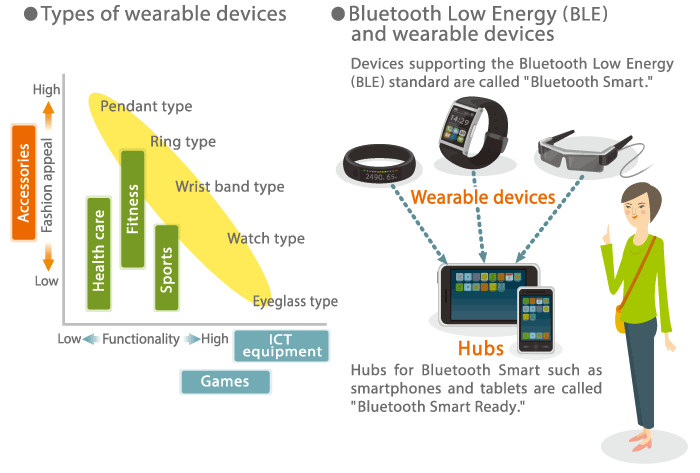Wonder Of Nature
vol.2 Towards Smart Charging of Mobile Devices

The 2nd edition
Where does terrestrial magnetism come from?
The British physician and scientist William Gilbert (1544-1603) was the first to think of our planet itself as a magnet, explaining the terrestrial magnetism in terms of a magnet shaped like the earth. However, in reality there is no large natural magnet inside the earth. Although the earth's core largely consists of iron, its high temperature prevents it from becoming a permanent magnet. When iron exceeds a transition point called the Curie temperature, it loses its propensity to be attracted by magnets and to become a body with strong magnetic properties itself. (The Curie temperature for iron is about 770 degrees centigrade.)
But then, how does terrestrial magnetism come about? The detailed mechanisms at work are as yet unexplored, but the so-called dynamo theory is now widely accepted as the most likely explanation.
The central part of the earth's core, called the inner core, consists of solid iron, but the outer core forms a convective flow that is constantly in motion. Because iron is a conductor, its movement within a magnet field produces a current due to electromagnetic induction. This is the same principle as found in a dynamo. The dynamo theory therefore states that the interior of the earth can be viewed as being akinto a giant dynamo.
In order to explain the theory, considering the experimental model of a disk-shaped dynamo is useful.
This consists of a rotating metal disk, with a brush contacting its outer circumference. The brush is connected to the shaft of the disk via a circular coil and a second brush. When a magnetic field is applied in the shaft direction while the disk spins, a current will be generated in the coil by electromagnetic induction, and this current in turn creates a magnetic field. In other words, the kinetic energy applied for rotating the disk is converted into electromagnetic energy that creates a persistent magnet field. The dynamo theory suggests that in the case of the earth, this magnetic field is what we observe as terrestrial magnetism. However, the exact mechanisms by which terrestrial magnetism is formed have not yet been fully explored, because the fluid motion of the earth's outer core involves convective currents and other flow types in a highly complex arrangement.
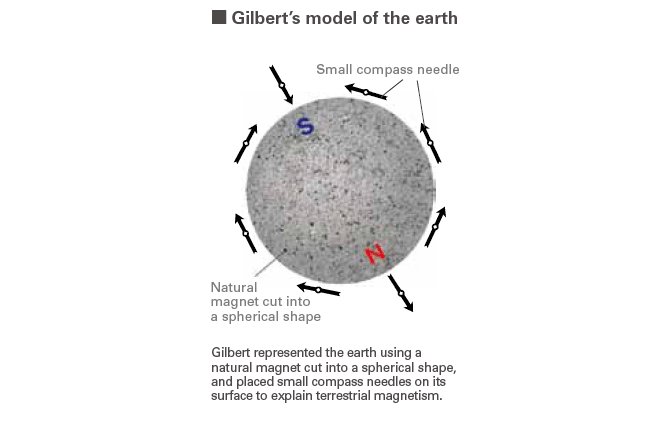
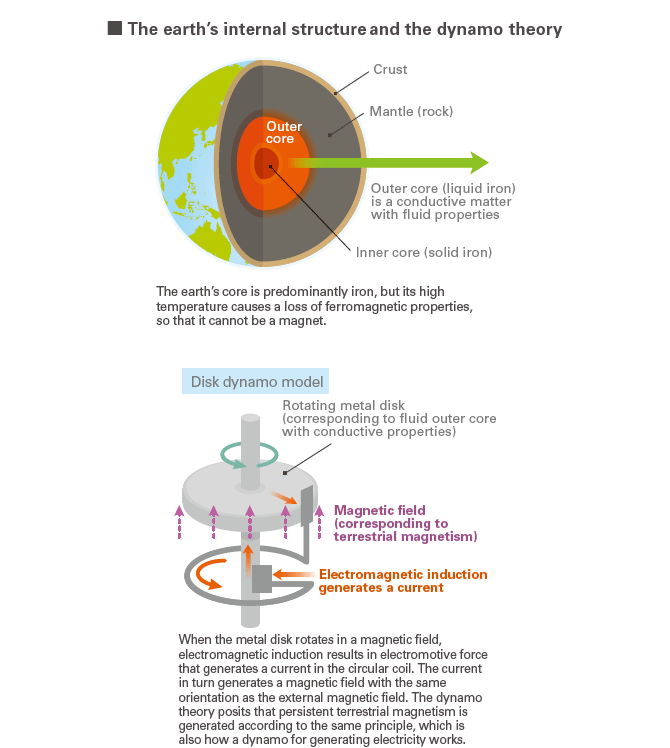
Faraday's dynamo: the world's first generator using electromagnetic induction
The discovery that electric currents create magnetic fields by the Danish scientist Hans Christian Oersted in 1820 opened up the way for the discipline of electromagnetics. If electricity can create magnetism, then the reverse should also be possible. This idea was the motivation for many attempts and experiments by researchers aimed at creating electricity from magnetism, but all of these ended in failure, until the tenacious and inquisitive English scientist Michael Faraday revealed the phenomenon of electromagnetic induction through a series of ingenious experiments. This was in 1831, about a decade after Oersted's discovery.
When a magnet is quickly inserted and removed into and from a coil, the so-called electromotive force produces a current that will register on a galvanometer connected to the coil. This is how electromagnetic induction is explained in textbooks and through classroom experiments. However, the experimental setup used by Faraday when first exploring electromagnetic induction was somewhat different, consisting of a ring-shaped soft iron core on which two windings were arranged. One of the windings was connected to a galvanometer, and the other to a battery. While a current is flowing constantly from the battery, the galvanometer does not register a change. But Faraday noticed that there is a slight change in the needle indication of the galvanometer in the instant when the current is being either switched on or off. This is due to electromagnetic induction between the two adjacent circuits. The phenomenon is called mutual induction or reciprocal induction and is the working principle of a transformer.
Even before the discovery of electromagnetic induction by Faraday, in the year 1824 the French scientist François Arago noticed that a when a magnet placed beneath a suspended copper disk is turned, the copper disk will also start to rotate. Known as Arago's disk or Arago's wheel, the phenomenon was unexplained until Faraday thought it could be linked to electromagnetic induction. He therefore devised an experimental setup where a copper disk is turned rapidly by hand within the magnetic field of a U-shaped magnet, which produces a continuous current. This was the world's first generator that could supply a sustained electric current. It is also similar in principle to the disk-shaped dynamo that is used to elucidate the dynamo theory of the earth's magnetism.
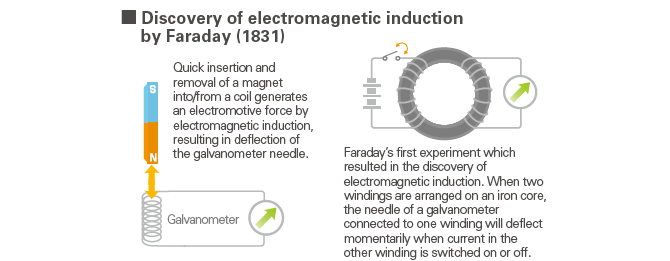
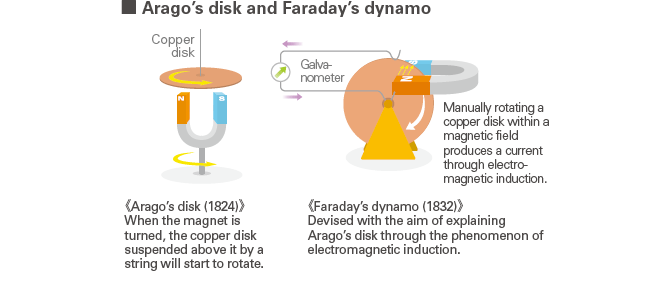
Qi standard for wireless charging will further enhance the wireless lifestyle
Facing off two coils in close proximity enables electromagnetic induction.This principle is at work for example in wireless IC cards such as used for public transportation fare collection. A coil embedded in the card and a coil on the reader/writer side exchange information via electromagnetic induction. The same approach can also be used to transmit energy without direct physical contact.
Wireless power transfer through electromagnetic induction is already available for electric shavers, toothbrushes and similar products. However, in the absence of a universal standard, separate charging devices are required for every product. In order to eliminate this inconvenience and promote interoperability across brands, the WPC established the so-called "Qi" standard for wireless charging of mobile devices. A Qi enabled device can be charged wirelessly simply by placing it on a Qi compliant charging pad. The working principle is as follows. A current flowing through the transmitter coil in the charging pad creates a magnetic flux that is picked up by the receiver coil integrated in the device. This magnetic flux is converted into electrical energy for charging the battery of the device. However, to increase efficiency of the transfer, the transmitter coil and receiver coil must be brought within a short distance of each other. Various approaches to ensure the required close proximity have been devised, such as the moving coil principle where the transmitter coil is automatically brought to the position closest to the receiver coil, and the coil array type with multiple transmitter coils that is less critical with regard to device placement and also allows simultaneous charging of more than one device.
Incidentally, because the "Qi" of the Qi standard is taken from the Chinese character for "life energy," it is pronounced "chee". TDK has harnessed its vast experience and know-how in magnetic materials technology as well as in precision winding and other fields to develop an ultra-thin coil unit for wireless charging compliant with the Qi standard. TDK's engagement in this area is helping to promote the realization of convenient and smart wireless charging of mobile devices.
Wireless charging coil unit compliant with WPC "Qi" standard
Two high-precision windings made of round copper wire are positioned on a high-performance magnetic sheet to create a wireless charging coil. The 2.5W type of the sheet coil is a mere 0.8mm thick, in addition, an industry-leading thickness of only 0.57 mm* has been achieved. The successful development of special manufacturing techniques has made it possible to offer sheet types that are flexible and highly resistant to shock. The resulting coil products will provide the high performance required for wireless charging of mobile devices such as smartphones, cell phones, and digital cameras.
* As of July 9, 2012, according to TDK investigations
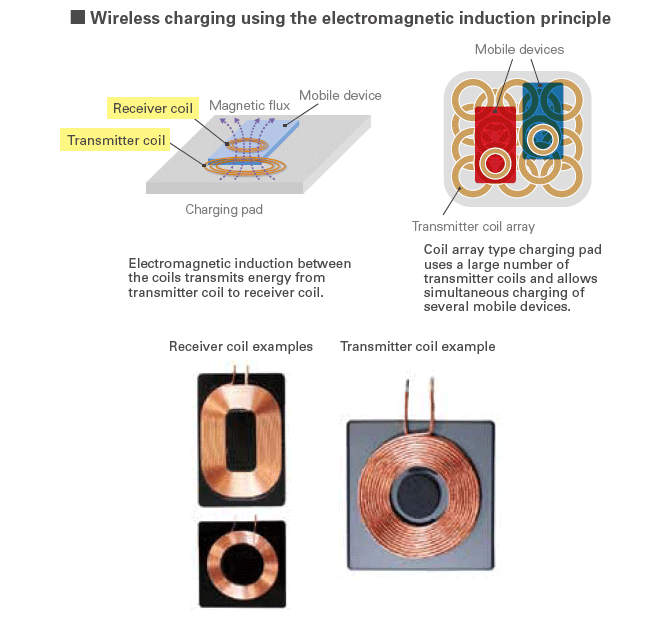
TDK is a comprehensive electronic components manufacturer leading the world in magnetic technology



